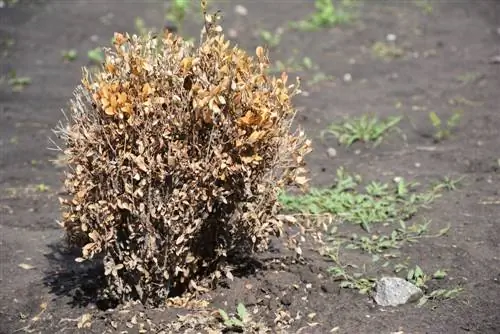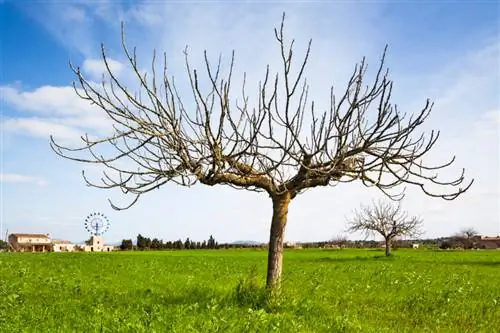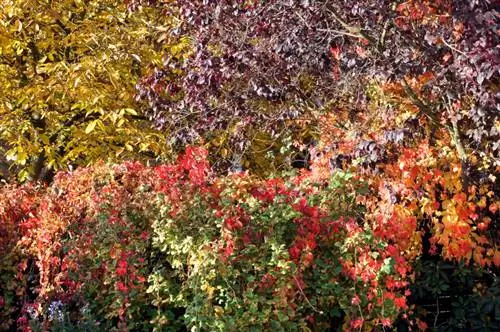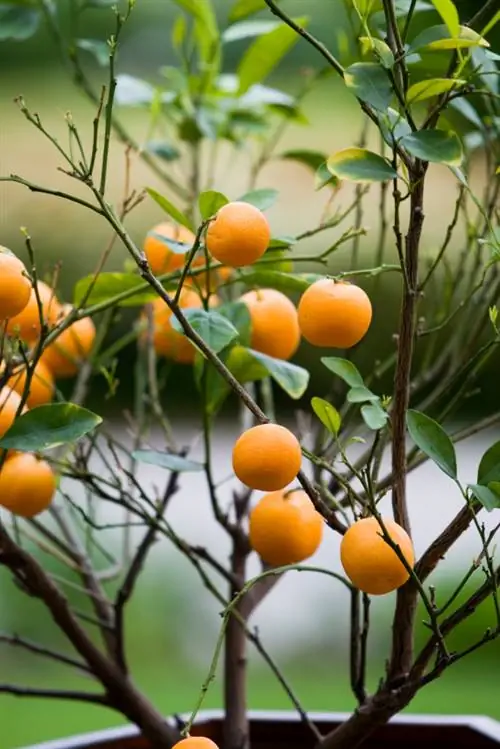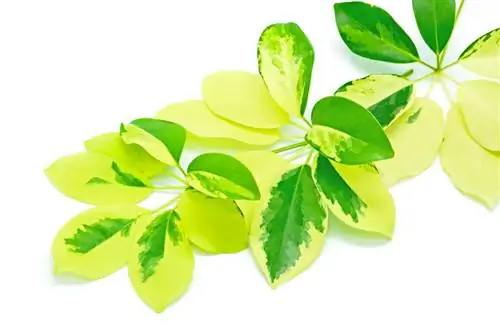- Author admin [email protected].
- Public 2023-12-16 16:46.
- Last modified 2025-01-23 11:21.
The boxwood is actually an easy-care tree that can be easily established in almost any location. In recent years, however, fungal diseases and pests that are difficult to control have been making the rounds, which is why the popularity of the former gardener's favorite is now beginning to crumble. If the boxwood loses leaves, there can be many reasons.
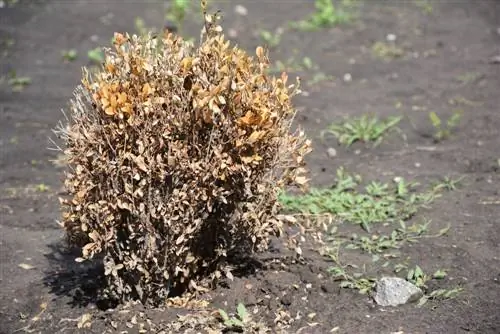
Why does a boxwood lose its leaves?
If a boxwood loses leaves, fungal infections, pest infestations, drought, lack of water, root rot or lack of nutrients can be the cause. Affected leaves and shoots should be removed and, if necessary, treated with suitable control products.
Fungal diseases often cause leaf loss
In many cases, fungal infections are the cause of leaf loss. As a rule, such a disease is initially accompanied by leaf discoloration and drying of leaves and shoots. Brown and orange spots in particular indicate an infestation with pathogens such as
- Cylindrocladium buxicola: causes boxwood shoot death
- Volutella buxi: responsible for boxwood cancer
- Fusarium buxicola: pathogen of boxwood wilt
- Puccinia buxi: causes the rarely occurring boxwood rust
What you can do about it
In the event of a fungal infection, you have to act quickly. Infected leaves and shoots must be removed immediately, although you can cut them back vigorously into he althy wood. The box then sprouts again, but due to its slow growth it will take a few years to return to its previous state. After pruning, fertilize with compost (€12.00 on Amazon) and horn shavings, but beforehand it is advisable to replace the soil around the box, especially in the event of shoot death. The fungal pathogens survive here for several years, so new infections can occur again and again.
Other causes of shedding leaves
In addition to fungi, there are also many other causes of leaf drop. A pest invasion, especially with plant suckers, often causes the boxwood to shed its damaged leaves. This phenomenon is typical for a severe infestation with, for example,
- Boxwood psyllid (Psylla buxi): Infestation often shows spoon-leaved leaves and yellowish discoloration
- Boxwood spider mite (Eurytetranychus buxi): leaves are covered with white dots and lines
- Box tree gall midge (Monarthropalpus buxi): The characteristic feature is the formation of galls on the leaves
What you can do about it
When it comes to pest infestation, the only thing that helps is pruning (don't forget to fertilize afterwards!) or treatment with a suitable pesticide. Oil-containing preparations, such as those based on neem or rapeseed oil, are often very suitable for leaf suckers.
Tip
In addition to those mentioned, comparatively harmless causes such as drought / lack of water, root rot due to waterlogging or lack of nutrients are also possible causes.

